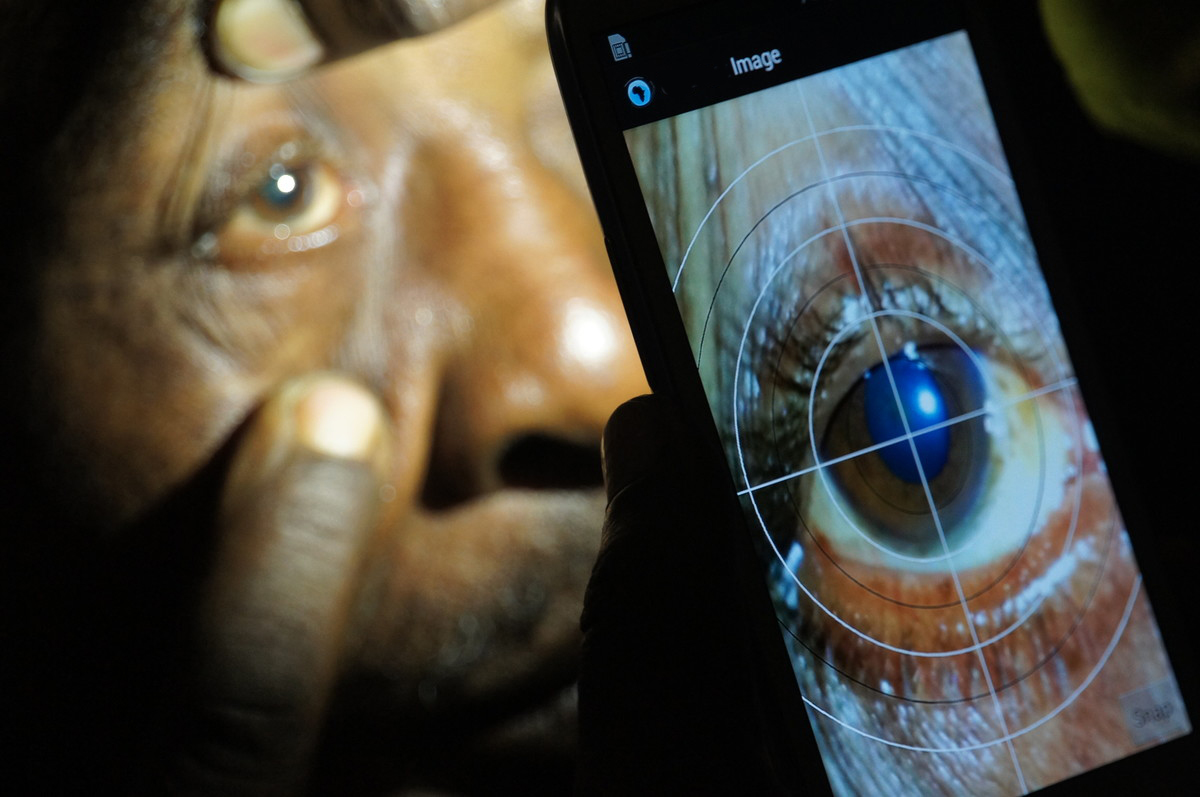Source: Ophthalmology And Eye Disease May 26, 2020 5 years, 6 months, 1 week, 4 days, 4 hours, 25 minutes ago
Ophthalmology: With close to about 485 million people around the world having diabetes and the current incidence rate of diabetics developing diabetic retinopathy standing at about 21%, retinal damage due to diabetes is now considered the most common cause of blindness in working-age adults.

In a new study carried out by scientists from the University of Bonn-Germany together with ophthalmology experts from Sankara Eye Hospital Bangalore-India, it was found that in low- and middle-income countries, an eye examination via smartphone could help to detect changes at an early stage. The research findings are published in the journal
Ophthalmology.
https://www.aaojournal.org/article/S0161-6420(20)30463-2/pdf
Typically, one of the most dangerous long-term complications of diabetes is vascular damage. In the retina which is eye's photosensitive layer, diabetes also impacts the capillaries.
This network of small vessels supplies the sensory cells with oxygen and nutrients. If it deteriorates, abnormal new vessels form instead and further harm the damaged retina. Left untreated, this often results in loss of vision and ultimately blindness.
Dr Maximilian Wintergerst from the Department of Ophthalmology at the University Hospital Bonn told Thailand Medical News, "If such a retinopathy is recognized and treated in time, vision loss can often be prevented. An important aspect of therapy is better control of the diabetes; in addition, it is also possible to treat the undersupplied retina with laser light before further problems occur. Laser treatment destroys the undersupplied retina so that it can no longer cause problems by releasing growth factors. These can otherwise cause the formation of abnormal vessels and fluid accumulation in the retina.
Due to current lifestyle trends involving lack of exercise and an increasingly high-calorie diet, diabetes is currently on the rise globally. It is estimated that eight out of 10 people with diabetes worldwide live in developing and emerging countries, which often have a poorly resourced health system.
Systematic retinal screening of diabetics is therefore usually not possible in these countries.
However this could be overcome by using devices that were actually designed for a completely different purpose ie smartphones. The increasingly affordable devices nowadays usually come with high-quality cameras. And these are surprisingly useful for diagnosing diseases of the retina. The current study conducted by Wintergerst together with colleagues from Bonn and Bangalore in southern India points in this direction.
The researchers compared four different approaches aimed at enabling ophthalmoscopy with a standard mid-range smartphone. Not all of them fulfilled this promise equally well.
Dr Wintergerst added, "The best result in our test was achieved by an adapter with an additional lens that is attached to the smartphone. It allowed almost 80 percent of eyes with any retinal changes to be detected, even in the early stages. Advanced damage could even be diagnosed 100 percent of the time."
The researchers had trained optometrists (ophthalmic ass
istants) from the Sankara Eye Hospital in Bangalore for their study. On average, they needed one to two minutes per examination. This involved documenting changes in the retina by filming the back of the eye with a smartphone camera.
Professor Dr Robert Finger from the Department of Ophthalmology at the University Hospital Bonn who is co-author of the study, considers these capabilities to be what makes the method so appealing.
He said, "This means that the examination can also be enabled by trained laypersons. The images are then sent via the Internet to the ophthalmologist for diagnosis."
Dr Mahesh P. Shanmugam, Head VitreoRetina & Ocular Oncology, Sankara Eye Foundation India commented, "COVID-19 has further necessitated the need for us to explore methods of reducing patients visiting hospital. This modality is promising in increasing efficiency of screening for retinal changes in diabetics."
The medical researchers are currently developing an app in collaboration with their colleagues from the Sankara Eye Foundation in India.
This new app will make it possible to create an encrypted electronic patient file for each patient on the smartphones used for the examination. It not only stores the images, but also the findings of the doctor who ultimately reviewed them.
In addition the researchers are working on an automatic pre-evaluation of the images using artificial intelligence. In such methods, the software "learns" to recognize pathological changes independently on the basis of thousands of retinal images.
The medical researchers hope that their work will improve eye care in developing and emerging countries. The project is funded by the German Federal Ministry for Economic Cooperation and Development and the Else Kröner-Fresenius Foundation. Recently, it was also presented with the special award of the "bytes4diabetes Award" for innovative digital approaches in the fight against diabetes.
The app and the AI platform should be ready by early July and talks are also underway with Apple and Samsung to incorporate the new app and certain new features to enable this new diagnostic service to be available for the masses not only for diabetes related eye diagnostics but also to cover other possible eye diseases.
For more articles on
eye diseases or latest research in
Ophthalmology, keep on logging to Thailand Medical News.
We Desperately Need Your Help. Please Help To Sustain This Website And All Our Initiatives To Propel Research By Donating. https://www.thailandmedical.news/p/sponsorship
